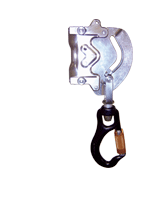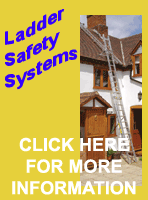

InstallationIncorrect installation of Fall Arrest Eyebolts & single
point anchors can prove fatal. Installation should be carried out in accordance with BS 7883:2005 - Application & Use of Anchor Devices Conforming to BS EN 795 and Appendix A of BS EN 795:1997 - Protection Against Falls From A Height - Anchor Devices - Requirements & Testing. Installation MUST include the testing procedures detailed in these two standards and only be carried out by someone who is competent to do so. In the case of Anchor Devices installed into brickwork, concrete and masonry a 6kN axial load test of 15 seconds must be performed to ensure the integrity of the fixing. Through fixings require a torque setting of 35Nm. Pre-use Inspection, Annual Testing & Re-CertificationBefore each occasion of use, anchor devices should be visually inspected & checked manually, in accordance with the manufacturers instructions. This should be performed by someone who is competent to do so, preferably the user. At least once every 12 months each anchor device should be subjected to a periodic examination in accordance with the manufacturers instructions by a competent person. If used for rope access purposes, anchor devices come under the Lifting Operations & Lifting Equipment Regulations 1998 (LOLER), which requires an examination period to be every 6 months.
A suitable label should be provided clearly showing the date of the next inspection & the uses for which the anchor device is intended, e.g. "For Fall Arrest Only", "For Rope Access Only" or "For Work Positioning & Restraint". For connection of personal fall protection equipment to anchor devices, connectors conforming to BS EN 362 should be used. Detailed advice is given in BS 8437.
|
|
||||||||||||||||||||||||||||||||||||||||||||


 Anchor
devices not regularly examined because they are not used on
a regular basis should not be used unless they have been inspected
within the previous 12 months (or 6 months for rope access
purposes).
Anchor
devices not regularly examined because they are not used on
a regular basis should not be used unless they have been inspected
within the previous 12 months (or 6 months for rope access
purposes).



